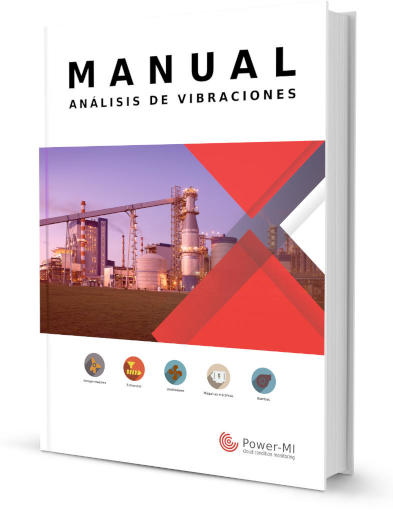When making a spectral diagnosis of a bearing problem the following considerations must be taken into account:
- The most frequent bearing component faults usually happen in the following order: outer race, inner race, rolling elements and finally in the cage. This will be the case as long as the bearing has been correctly mounted.
- It is really important to know if the bearing has a defect in the inner race or in the outer race. The importance of identifying the defect type lies in the need to estimate the useful remaining life of the bearing. Bearings with defects in the outer race generally have a longer expected life than bearings with defects in the inner race.
- Identical defects in the two bearing races are characterized by the fact that the amplitudes of the inner race fault frequencies will be lower than the amplitudes of the outer race fault frequencies. The reason for this is related to the bearing structure and the path the vibration needs to travel to arrive to the sensor. If we place the sensor close to the bearing load zone, where most of the outer race defects occur, the transmission of the vibration energy to the sensor occurs through the outer race and the casing. This is a transmission path that provides a reliable measurement of the vibration due to the defect. If the fault is located in an area of the inner race, which is the one that rotates in most cases, the vibration energy is transmitted this time from the inner race to the sensor through the balls or rollers, the cage, the outer race and the casing, so that the transmission is usually weaker. In addition, it has to be taken into account that the inner race is turning and is often outside the load zone, which implies a significantly lower amplitude of impacts. It is important to make sure that the data sampling of each measurement takes at least the time corresponding to one shaft revolution, since if the data is taken very quickly it can happen that the signal coming from the impacts produced when the defect passes through the load zone is not acquired.
- High-frequency vibration readings are the first indicator of the beginning of bearing deterioration, since the impacts due to a small defect tend to excite the races natural frequencies (at high frequency). These measurements are made in acceleration units in the band between 1 and 20 kHz.
- During the initial phase of bearing race deterioration high frequency low amplitude harmonics usually appear in the spectra. Its identification will allow us to detect the initial phase of bearing deterioration and to be able to monitor its evolution, allowing us to plan for a replacement well in advance. As the damage progresses, the amplitudes of the initially identified fault frequencies will increase and intermediate harmonics of those fault frequencies will appear, until at the final stage of highest damage severity level the first harmonics of the fault frequencies will clearly appear.
- The occurrence of new bearing failure frequencies will indicate a greater defect severity.
- The bearing race failing frequencies are sometimes accompanied by side bands whose frequency difference with respect to the fundamental coincide with the shaft rotating frequency. Another frequency that can modulate bearing race failing frequencies is the FTF or bearing cage failing frequency, indicating a greater bearing damage. The increase in the number and amplitude of these sidebands will indicate the progression of the damage.
- When there is significant bearing damage, individual frequencies may disappear and significant energy bands may appear, often indicating changes in bearing geometry.
- If the lubrication is not adequate, bearing deterioration will accelerate, so it is good practice that when the damage is identified, the bearing properly lubricated to try to prolong its life.
- Time waveform analysis can be helpful for bearing diagnosis. For deteriorated bearings it will be characterized by high impacts in acceleration and a frequency difference between peaks that roughly coincide with one of the failing frequencies.
- How does the rotating speed influence the progression of bearing deterioration?. It has been verified in practice that for rotating speeds of 3000 rpm or higher the degradation is considerably accelerated, whereas for speeds below 300 rpm the progression of the defect is very slow and can evolve for several months.
The development of historical cases will help us a lot in determining the severity in future cases. For example, identifying a bearing defect and predicting a three-week duration will be an excellent opportunity to compare the actual defect with the vibration data obtained. If the defect is really serious, the next time the levels reach those obtained in the last reading we will know that the damage is very severe. If, on the other hand, a bearing is changed and shows just a regular peeling, we will know that if in the future the bearing shows the same symthoms, will still be able to continue working longer. Although machines are not identical, it is possible to extrapolate the results of similar bearings, taking into account some small differences in behavior.

 cloud_download
cloud_download